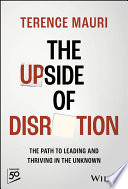

Disruption is often viewed negatively, but the book emphasizes that it can be a powerful catalyst for innovation and growth. Disruption occurs when new technologies, business models, or consumer behaviors fundamentally change the landscape of an industry. The authors argue that by embracing disruption, companies can reposition themselves and discover new opportunities. They illustrate this with examples from various sectors, showing how businesses that adapt to change can thrive. Understanding the nature of disruption allows leaders to anticipate changes and respond proactively rather than reactively, fostering a culture of resilience and adaptability within their organizations.
Continue readingTechnology is a primary driver of disruption in today’s economy. The book explores how advancements in technology, such as artificial intelligence, blockchain, and the Internet of Things, are reshaping industries. It highlights that organizations must leverage these technologies to stay competitive. The authors provide case studies of companies that have successfully integrated technology into their operations, leading to enhanced efficiency, improved customer experiences, and new revenue streams. By understanding and adopting emerging technologies, businesses can not only survive disruption but also lead it.
Continue readingInnovation is portrayed as a crucial response to the challenges posed by disruption. The book outlines various strategies for fostering innovation within organizations, including encouraging a culture of experimentation, investing in research and development, and collaborating with startups. It emphasizes that innovation should not be limited to product development but should also encompass processes, business models, and customer engagement strategies. The authors argue that organizations that prioritize innovation are better equipped to navigate disruption and seize new market opportunities.
Continue readingAgility is a key theme in the book, with the authors arguing that organizations must be agile to respond effectively to disruption. They discuss the concept of agile management, which involves flexible organizational structures, cross-functional teams, and iterative processes. The book provides practical advice on how to cultivate agility within teams, such as adopting agile methodologies and fostering a mindset of continuous improvement. By being agile, organizations can quickly pivot in response to market changes, customer feedback, and emerging trends, positioning themselves for long-term success.
Continue readingThe authors stress the importance of a customer-centric approach in navigating disruption. They argue that understanding customer needs and preferences is vital for businesses to remain relevant in a rapidly changing environment. The book provides insights into how companies can gather and analyze customer data to inform their strategies. It also highlights the need for organizations to engage with customers through various channels and to be responsive to their feedback. By prioritizing the customer experience, businesses can build loyalty and differentiate themselves from competitors during times of disruption.
Continue readingEffective leadership is essential for guiding organizations through disruption. The book discusses the qualities of leaders who can successfully navigate change, such as vision, empathy, and decisiveness. It emphasizes the need for leaders to communicate transparently with their teams and to foster an environment where employees feel empowered to contribute ideas and solutions. The authors provide examples of leaders who have successfully steered their organizations through turbulent times, illustrating the impact of strong leadership on resilience and adaptability.
Continue readingResilience is a critical attribute for organizations facing disruption. The book offers strategies for building resilience, such as diversifying revenue streams, investing in employee development, and maintaining a strong organizational culture. The authors argue that resilient organizations are better equipped to withstand shocks and adapt to new realities. They provide case studies of companies that have demonstrated resilience in the face of disruption, highlighting the importance of a proactive approach to risk management and the cultivation of a supportive work environment.
Continue reading